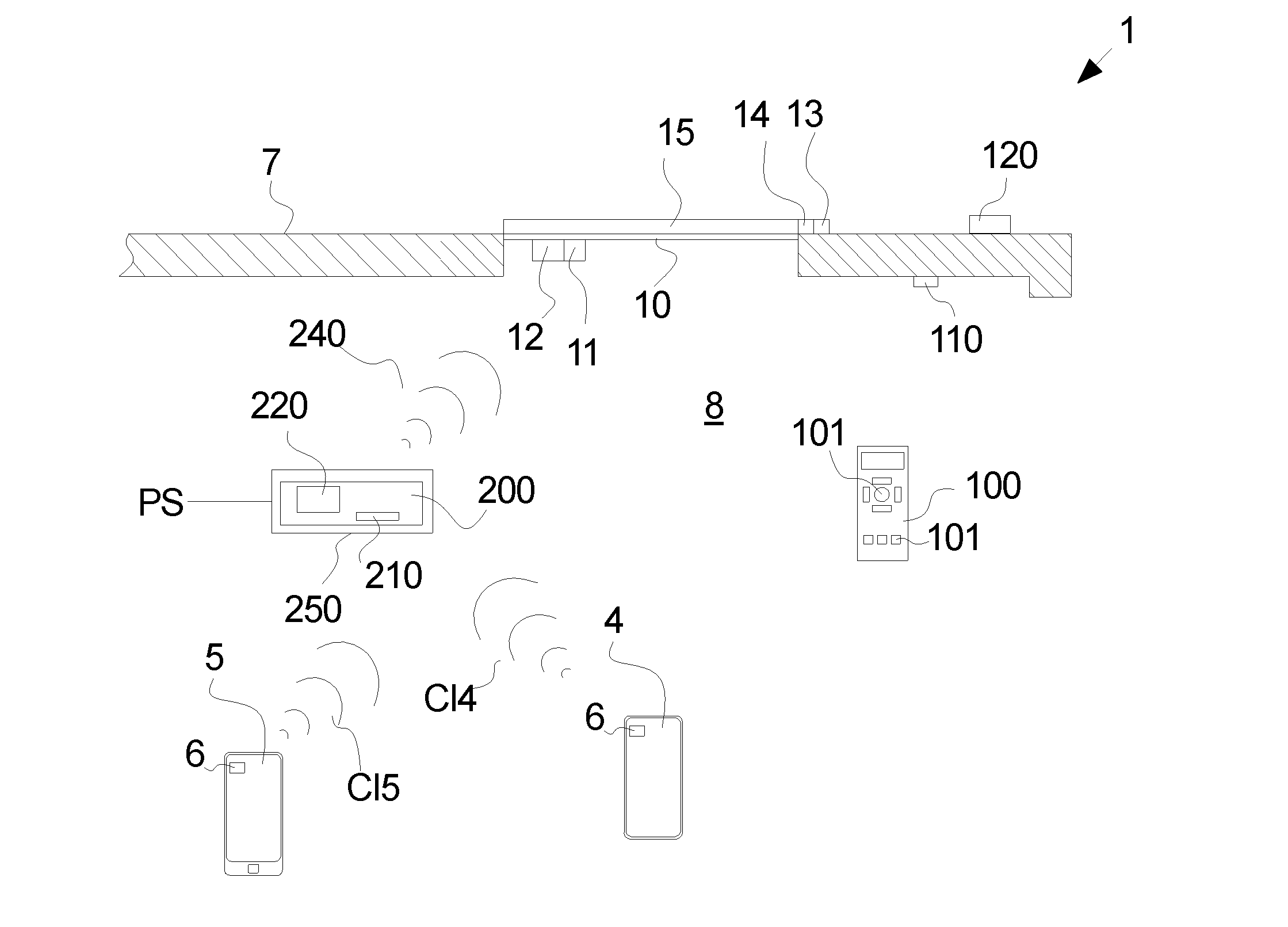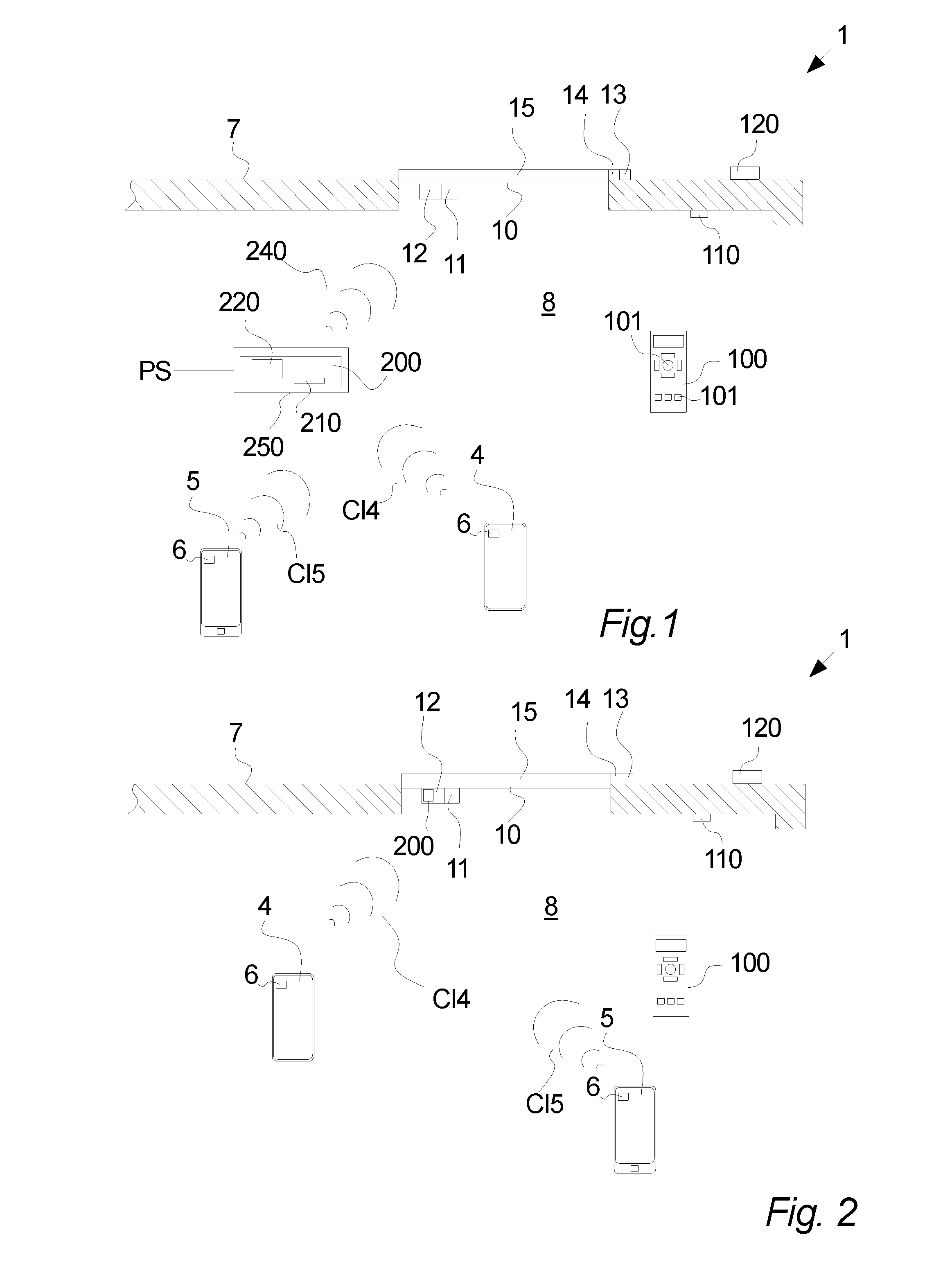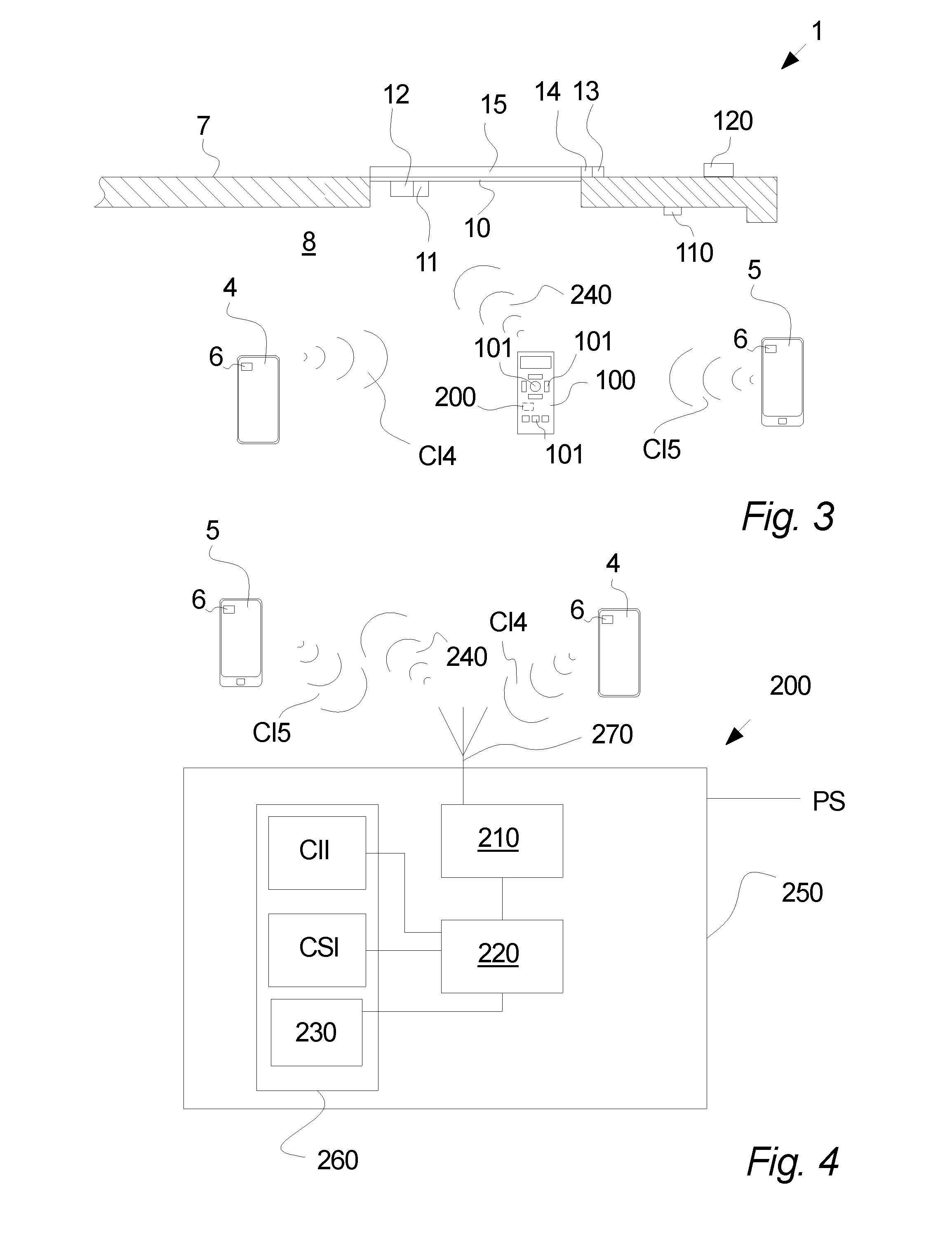Presence detection in building automation systems
- Summary
- Abstract
- Description
- Claims
- Application Information
AI Technical Summary
Benefits of technology
Problems solved by technology
Method used
Image
Examples
Embodiment Construction
[0124]FIG. 1 illustrates a building automation system 1 according to embodiments of the invention. The building automation system 1 is installed in a building 7 comprising one or more rooms 8 and comprises controllable units 12, 13 associated with devices 10, 15 to be operated.
[0125]In the present example, the device 10 is a window and the device 15 is an awning. The controllable unit 12 is associated with the window 10, and is arranged to control a device controller 11 such as a drive arrangement, e.g. an actuator and / or an electric motor. The device controller 11 is arranged to open and close the window 10 according to commands / input from the controllable unit 12.
[0126]In a similar way, the controllable unit 13 is associated with the awning 15, and is arranged to control a device controller 14, in this case a drive arrangement 14 such as an electric motor which is arranged expand and retract (e.g. by winding / unwinding) the awning according to commands from the controllable unit 13...
PUM
 Login to View More
Login to View More Abstract
Description
Claims
Application Information
 Login to View More
Login to View More - R&D
- Intellectual Property
- Life Sciences
- Materials
- Tech Scout
- Unparalleled Data Quality
- Higher Quality Content
- 60% Fewer Hallucinations
Browse by: Latest US Patents, China's latest patents, Technical Efficacy Thesaurus, Application Domain, Technology Topic, Popular Technical Reports.
© 2025 PatSnap. All rights reserved.Legal|Privacy policy|Modern Slavery Act Transparency Statement|Sitemap|About US| Contact US: help@patsnap.com



